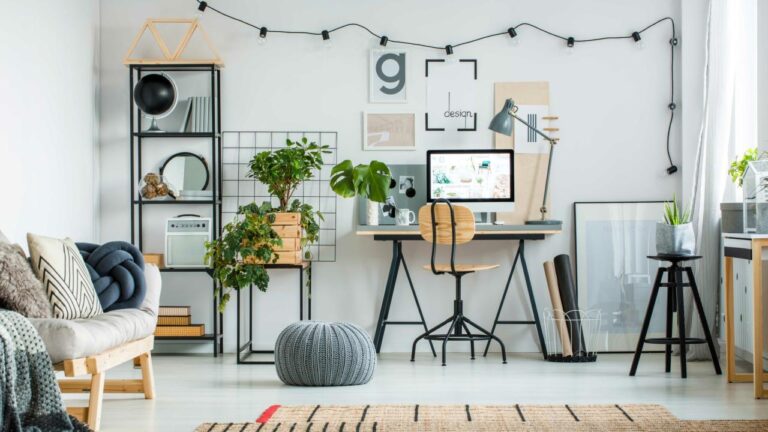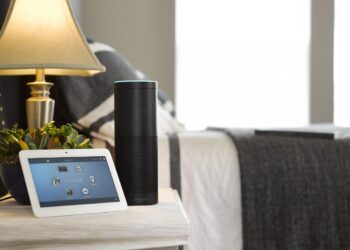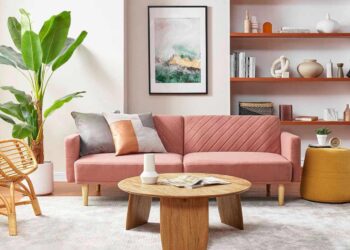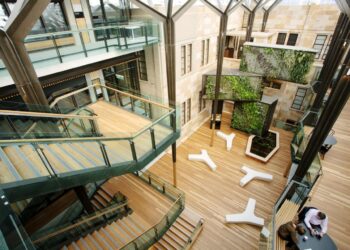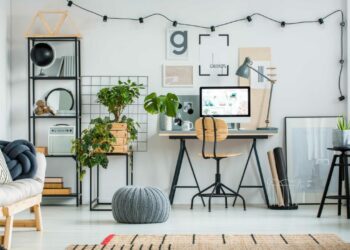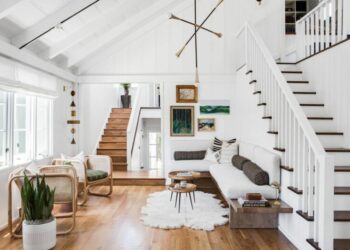The modern workspace is undergoing a profound transformation, moving beyond mere functionality to become a dynamic hub that fosters creativity, collaboration, and well-being. Far from being simply a place to perform tasks, it’s a strategically designed environment that can significantly impact productivity, employee satisfaction, and overall business success. This comprehensive article delves into the most innovative and transformative ideas shaping contemporary workspaces, exploring the driving forces behind their evolution, highlighting groundbreaking concepts, and forecasting future trends. Understanding these creative workspace innovations isn’t just about aesthetic appeal; it’s about discerning the critical elements that lead to enhanced engagement, improved performance. From agile offices to biophilic design, the impact of forward-thinking workspace planning is redefining how individuals and teams thrive.
Historically, workspaces were often designed for efficiency and hierarchy, with rows of identical desks or enclosed cubicles emphasizing individual, often isolated, work. The industrial revolution saw the rise of the factory floor, optimized for production lines. Later, the corporate office emerged, focusing on administrative tasks. However, the 21st century has introduced an unprecedented confluence of disruptive forces: rapid technological advancement, a global shift towards flexible work models, a heightened awareness of mental health, and an imperative for collaborative innovation. These factors are propelling designers, HR professionals, and business leaders into a pivotal role. They are no longer just arranging furniture; they are experience architects, culture cultivators, and productivity enhancers, crafting environments that address multifaceted challenges and cater to an increasingly diverse and dynamic workforce. This continuous pursuit of flexibility, inspiration, and human-centricity is the driving force behind the fascinating breakthroughs we are witnessing today.
Driving Forces Behind Workspace Evolution
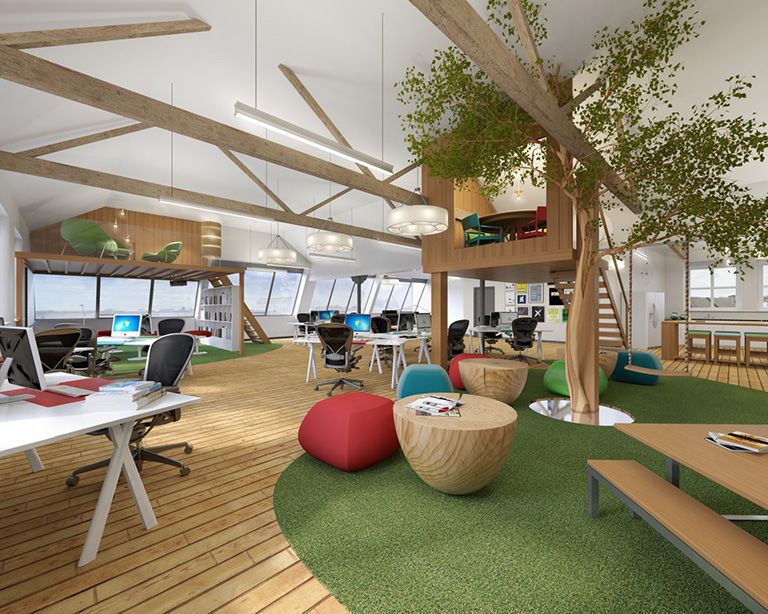
Several powerful currents are converging to redefine the purpose and practice of workspace design, pushing it toward increasingly intelligent, adaptable, and human-centric solutions.
A. Technological Advancements:
* Ubiquitous Connectivity: Reliable high-speed internet, Wi-Fi 6, and 5G networks enable seamless communication and data access from anywhere within the workspace, supporting flexible and remote work.
* Cloud Computing: The shift to cloud-based applications and storage frees workspaces from reliance on physical servers and fixed workstations, promoting mobility and hot-desking.
* Smart Building Technology: IoT sensors monitor occupancy, air quality, lighting, and temperature, allowing for automated adjustments that optimize comfort, energy efficiency, and space utilization.
* Collaboration Tools: Advanced video conferencing systems, interactive whiteboards, and digital collaboration platforms facilitate seamless communication between on-site and remote teams.
* Augmented Reality (AR) & Virtual Reality (VR): These technologies are emerging as tools for immersive virtual meetings, remote collaboration on 3D models, and even virtual training simulations, blurring the lines between physical and digital workspaces.
B. Shifting Work Models and Workforce Demographics:
* Hybrid Work: The widespread adoption of hybrid work models (a mix of in-office and remote work) necessitates workspaces that are flexible, adaptable, and attractive enough to draw employees in for collaboration and connection.
* Flexible Schedules: Employees increasingly demand flexibility in when and how they work, requiring workspaces that can accommodate various schedules and individual work preferences.
* Gig Economy and Freelancers: The rise of independent contractors and project-based work calls for more agile and accessible co-working spaces and collaborative hubs.
* Multi-Generational Workforce: Workplaces need to cater to the diverse needs and preferences of different generations, from digital natives to experienced professionals, integrating various communication styles and work preferences.
* Talent Attraction & Retention: In a competitive job market, an inspiring and supportive workspace is a key differentiator for attracting and retaining top talent, especially among younger generations who prioritize culture and well-being.
C. Health, Well-being, and Psychological Impact:
* Mental Health Awareness: Growing recognition of the link between physical environment and mental well-being drives demand for spaces that reduce stress, promote focus, and offer opportunities for relaxation and mindfulness.
* Biophilic Design: Integrating natural elements (plants, natural light, water features) into workspaces to reduce stress, improve air quality, and enhance cognitive function and creativity.
* Ergonomics: Investing in ergonomic furniture and adjustable workstations to prevent musculoskeletal issues and promote physical comfort and productivity.
* Air Quality and Sanitation: Heightened awareness of indoor air quality, ventilation, and hygiene protocols, especially post-pandemic, influencing material choices and airflow systems.
* Acoustic Comfort: Designing spaces with effective sound dampening and acoustic zoning to reduce noise distractions and support various work modes (focus, collaboration, quiet zones).
D. Sustainability and Environmental Responsibility:
* Eco-Friendly Materials: Prioritizing sustainable, recycled, locally sourced, and non-toxic materials for furniture, finishes, and construction, reducing the environmental footprint.
* Energy Efficiency: Designing workspaces with optimized natural light, smart lighting controls, and efficient HVAC systems to reduce energy consumption.
* Waste Reduction: Implementing recycling programs, composting, and designing for modularity and durability to minimize waste generation.
* Water Conservation: Incorporating water-efficient fixtures and, where possible, rainwater harvesting or greywater recycling systems.
* Corporate Social Responsibility (CSR): Companies increasingly integrate sustainable workspace design as part of their broader CSR initiatives, appealing to employees and clients who value environmental stewardship.
E. Emphasis on Innovation and Collaboration:
* Cross-Functional Teams: The need for diverse teams to collaborate frequently drives demand for flexible, informal meeting spaces and project zones.
* Brainstorming & Ideation: Workspaces are designed with dedicated areas for creative thinking, equipped with whiteboards, movable furniture, and digital tools for brainstorming.
* Knowledge Sharing: Creating environments that facilitate spontaneous interactions and informal learning, breaking down hierarchical barriers.
* Agile Methodologies: The adoption of agile and scrum methodologies in many industries requires workspaces that can be quickly reconfigured to support iterative work cycles.
Transformative Creative Workspace Concepts
The following concepts represent the cutting edge of workspace design, moving beyond traditional office layouts to offer dynamic, highly responsive, and inspiring environments.
A. Agile and Activity-Based Workspaces (ABW):
* Flexible Zones: Instead of assigned desks, employees choose from various zones based on their task: quiet focus areas, collaborative hubs, informal lounge zones, meeting rooms, or individual booths for calls.
* Hot-Desking & Hoteling: Desks are not assigned, maximizing space utilization and encouraging mobility. “Hoteling” involves booking a desk or space in advance.
* Movable Furniture: Lightweight, reconfigurable furniture allows teams to quickly adapt spaces for different activities, from quick stand-up meetings to large brainstorming sessions.
* Technology Integration: Seamless Wi-Fi, power outlets, and easy-to-use AV equipment in every zone support quick transitions between tasks and locations.
B. Biophilic Design Integration:
* Indoor Greenery: Extensive use of potted plants, living walls, and indoor gardens to improve air quality, reduce stress, and enhance cognitive function.
* Natural Light Optimization: Maximizing natural light through large windows, open layouts, and strategic placement of furniture, reducing reliance on artificial lighting.
* Natural Materials & Textures: Incorporating wood, stone, cork, and natural fabrics to create a sense of connection to the outdoors and evoke calm.
* Views of Nature: Designing layouts that provide employees with direct views of green spaces, trees, or water features.
* Natural Patterns & Forms: Using organic shapes, fractal patterns, and natural motifs in design elements to create a harmonious and comforting environment.
C. Wellness-Centric Design:
* Mindfulness & Meditation Zones: Dedicated quiet spaces for employees to de-stress, meditate, or take a short break from screens.
* Ergonomic Furniture & Sit-Stand Desks: Providing adjustable workstations, ergonomic chairs, and active seating options to promote physical health and reduce sedentary behavior.
* Healthy Food Options & Kitchens: Well-equipped kitchen areas that encourage healthy eating, often stocked with fresh produce and snacks.
* Fitness & Movement Spaces: On-site gyms, yoga studios, or dedicated areas for stretching and physical activity.
* Air Quality Monitoring: Real-time sensors tracking CO2 levels, VOCs, and humidity, with automated ventilation systems to maintain optimal indoor air quality.
D. Hybrid Collaboration Hubs:
* Seamless AV Technology: Meeting rooms equipped with high-quality cameras, microphones, and large displays that ensure remote participants are fully integrated and visible.
* Interactive Whiteboards: Digital whiteboards that allow both on-site and remote participants to co-create and brainstorm in real-time.
* Dedicated Focus Rooms for Remote Calls: Small, soundproofed booths or rooms designed for individual video calls, ensuring privacy and minimizing disruption.
* Flexible Meeting Configurations: Rooms that can quickly transform to accommodate hybrid teams, from casual lounge setups to formal conference tables.
E. Smart Office Technology & Data Analytics:
* Occupancy Sensors: Monitoring real-time occupancy rates in different zones to optimize space utilization, inform cleaning schedules, and adjust environmental controls.
* Personalized Climate Control: Apps or smart interfaces allowing individual employees to adjust temperature, lighting, or airflow in their immediate vicinity.
* Wayfinding Apps: Digital navigation within large office spaces to help employees find available desks, meeting rooms, or colleagues.
* Predictive Maintenance: Sensors monitoring building systems (HVAC, lighting) to predict and prevent failures, ensuring a comfortable and functional environment.
* Data-Driven Layout Optimization: Using analytics on space utilization and collaboration patterns to inform future design iterations and optimize office layouts for efficiency and productivity.
Impact Across Diverse Organizational Structures
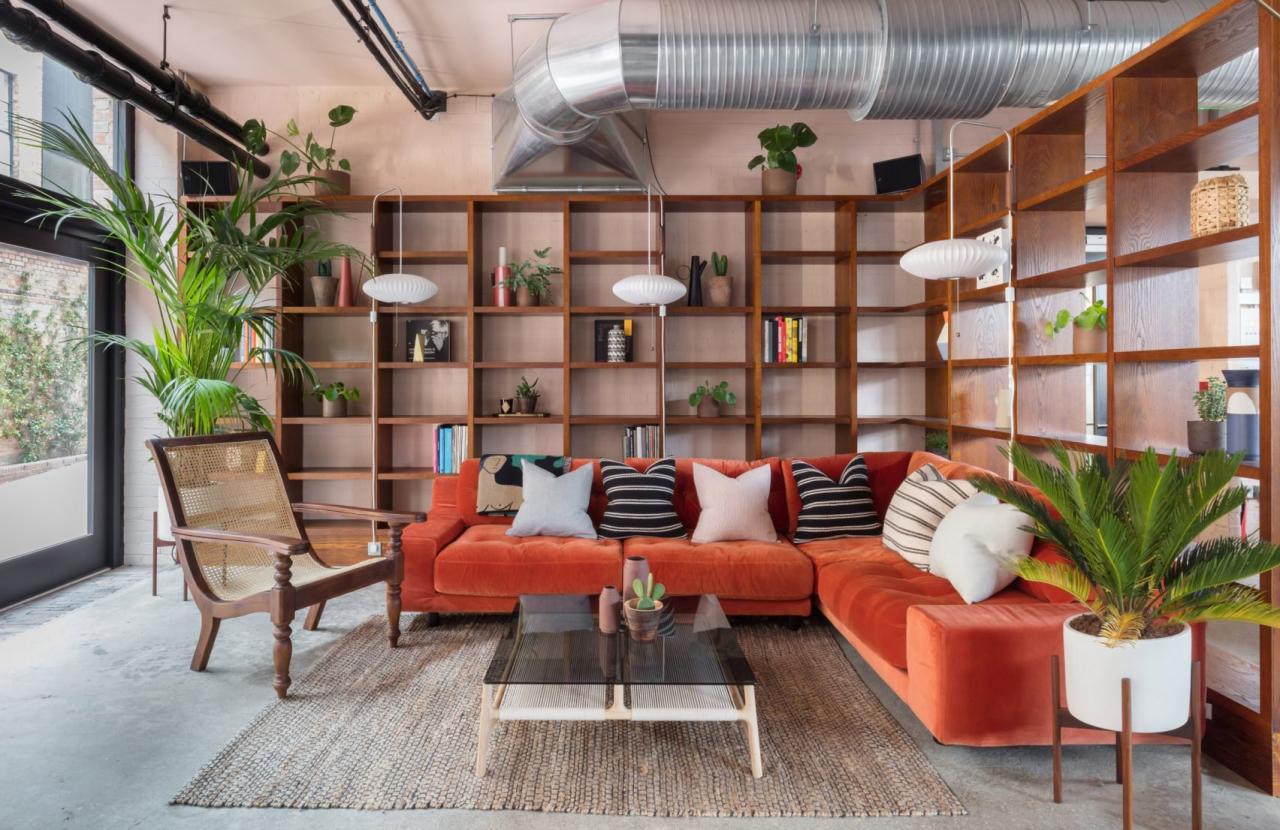
These innovative workspace concepts are applicable across various industries and company sizes, fundamentally altering how organizations function and how employees engage.
A. Corporate Headquarters:
* Showcase for Culture: Large corporations use innovative workspaces as a statement of their brand, values, and commitment to employee well-being and innovation, attracting top talent.
* Global Collaboration Hubs: Designing advanced tech-enabled spaces that facilitate seamless collaboration between teams in different time zones and locations.
* Sustainability Exemplars: Showcasing commitment to environmental responsibility through green building certifications and sustainable design practices.
* Employee Well-being Ecosystems: Offering comprehensive on-site amenities like fitness centers, cafes, medical services, and varied work zones to support a holistic employee experience.
B. Startups and Tech Companies:
* Agile & Adaptable: Workspaces designed to quickly adapt to rapid growth, changing team structures, and evolving project needs.
* Informal & Collaborative: Emphasizing open layouts, lounge areas, and playful elements to foster a relaxed, creative, and highly collaborative environment.
* Brand Identity: Workspaces often strongly reflect the company’s youthful, innovative, and often rebellious brand identity.
* Budget-Friendly Creativity: Innovative use of affordable materials, flexible furniture, and DIY elements to create unique and inspiring spaces on a tighter budget.
C. Creative Agencies and Design Studios:
* Inspiration & Stimulation: Spaces designed to spark creativity, often featuring vibrant colors, diverse textures, art installations, and areas for hands-on experimentation.
* Idea Generation Hubs: Dedicated whiteboarding walls, project rooms, and flexible brainstorming zones.
* Client Collaboration Spaces: Comfortable and visually appealing areas designed for client presentations and collaborative workshops.
* “Show, Don’t Tell”: The workspace itself serves as a living portfolio, showcasing the agency’s design philosophy and capabilities.
D. Educational Institutions and Learning Spaces:
* Flexible Classrooms: Designing classrooms with movable furniture, collaborative zones, and integrated technology to support active learning, group projects, and diverse teaching styles.
* Innovation Labs: Dedicated spaces equipped with prototyping tools, 3D printers, and collaborative workstations to foster interdisciplinary learning and project-based work.
* Student Hubs: Creating vibrant, multi-functional common areas that encourage social interaction, informal learning, and well-being.
* Seamless Blended Learning: Integrating technology for both in-person and remote students, ensuring equitable access to learning resources and collaborative opportunities.
E. Healthcare and Wellness Facilities:
* Healing Environments: Incorporating biophilic design, natural light, and calming color palettes to reduce patient stress and promote healing.
* Staff Well-being Zones: Creating break rooms and quiet spaces that support the mental health and rejuvenation of healthcare professionals.
* Flexible Consultation Rooms: Adaptable spaces that can serve various patient needs, from telehealth consultations to in-person examinations.
* Hygienic and Cleanable Surfaces: Selecting materials that are easy to sanitize while still contributing to a comfortable and appealing environment.
Challenges and Ethical Considerations
While innovative workspace ideas offer immense potential, their implementation comes with significant challenges and ethical dilemmas that designers, employers, and employees must navigate responsibly.
A. Privacy vs. Collaboration:
* Open-Plan Distractions: While promoting collaboration, overly open-plan offices can lead to increased noise, lack of privacy, and reduced focus for individual tasks.
* Solutions: Implementing quiet zones, acoustic pods, sound-masking technology, and clear guidelines for noise levels to balance collaboration with individual focus needs.
* Monitoring Concerns: Smart office technology (e.g., occupancy sensors) can raise concerns about employee surveillance and data privacy if not implemented transparently and ethically.
B. Equity and Inclusivity:
* Digital Divide: Ensuring that all employees, regardless of technological proficiency or access to home equipment, can effectively use smart office tools and participate in hybrid work.
* Accessibility for All Abilities: Designing spaces that are physically accessible (ramps, wide doorways) and ergonomically sound for diverse body types and abilities, including neurodiversity-friendly spaces.
* Fair Access to Desks/Spaces: In hot-desking models, ensuring equitable access to preferred workspaces for all employees, avoiding a “survival of the fittest” mentality.
C. Cost and Return on Investment (ROI):
* High Initial Investment: Implementing advanced technology, ergonomic furniture, and extensive biophilic elements can require significant upfront capital.
* Measuring Impact: Quantifying the ROI of creative workspaces in terms of productivity, retention, and well-being can be challenging but is crucial for justifying investment.
* Long-Term Maintenance: Smart technology and living elements often require ongoing maintenance, which needs to be factored into the budget.
D. Change Management and Employee Adoption:
* Resistance to Change: Employees accustomed to traditional office setups may resist new models like hot-desking or activity-based working, requiring clear communication and training.
* Cultivating New Norms: Establishing new behavioral norms and etiquette (e.g., regarding noise levels, booking systems) is crucial for the success of flexible workspaces.
* Leadership Buy-in: Strong leadership support and modeling of desired behaviors are essential for successful adoption of new workspace philosophies.
E. Sustainability Beyond Aesthetics:
* Embodied Carbon: Considering the carbon footprint associated with manufacturing and transporting all the materials and furniture used in the workspace.
* True Energy Efficiency: Ensuring that smart systems genuinely lead to energy savings and are not simply “smart for smart’s sake.”
* E-Waste: Managing the electronic waste generated by smart office technology and ensuring responsible recycling or repurposing.
The Evolving Role of Workspace Designers and Leaders
The future of workspaces demands a collaborative approach, where designers, HR, IT, and leadership work in synergy to create environments that are both inspiring and strategically effective.
A. Experience Architects:
* Holistic Design: Moving beyond aesthetics and functionality to design the entire employee experience, from arrival to departure, encompassing physical, digital, and cultural elements.
* Journey Mapping: Creating detailed maps of employee journeys through the workspace, identifying pain points and opportunities for delight.
* Emotional Connection: Designing spaces that evoke positive emotions, foster a sense of belonging, and inspire creativity.
B. Data-Driven Strategists:
* Space Utilization Analytics: Using IoT data to understand how spaces are actually used, informing design adjustments and resource allocation.
* Employee Well-being Metrics: Tracking anonymized data related to comfort, engagement, and productivity to measure the impact of workspace design on well-being.
* Predictive Planning: Leveraging data to anticipate future space needs, talent trends, and technology requirements.
C. Culture Cultivators and Change Managers:
* Facilitating Adoption: Guiding employees through transitions to new work models, providing training, and addressing concerns.
* Building Community: Designing spaces and programs that foster social connection, informal learning, and a strong organizational culture.
* Leadership by Example: Leaders actively using and promoting the intended behaviors within the new workspace design.
D. Sustainability and Wellness Advocates:
* Ethical Sourcing: Prioritizing environmentally responsible and ethically produced materials and furniture.
* Biophilic Integration: Championing the inclusion of natural elements for their proven health and well-being benefits.
* Healthy Building Standards: Adhering to certifications like LEED, WELL Building Standard, or Fitwel to ensure a healthy and sustainable environment.
E. Flexible System Designers:
* Modular and Scalable: Designing workspaces that can easily expand, contract, or reconfigure to adapt to changing business needs, team sizes, and work models.
* Technology Integrators: Ensuring seamless integration of IT infrastructure, AV systems, and smart building technology.
* Long-Term Vision: Planning for future technological advancements and workforce shifts to ensure the workspace remains relevant and effective for years to come.
Conclusion
The future of workspaces is defined by a shift from rigid structures to dynamic ecosystems designed to nurture human potential. By embracing flexible layouts, biophilic principles, intelligent technology, and a deep commitment to well-being, companies are transforming their offices into powerful assets for innovation, collaboration, and talent development. These creative workspace ideas are not just about aesthetics; they are strategic investments in human capital and organizational resilience. For designers, leaders, and employees alike, this era presents immense opportunities to co-create environments that are not just places to work, but spaces that genuinely inspire, empower, and contribute to a more productive, healthy, and fulfilling professional life. The journey towards truly inspiring workspaces is continuous, promising a future where our professional environments are as adaptable and vibrant as the human spirit itself.

